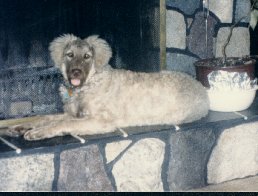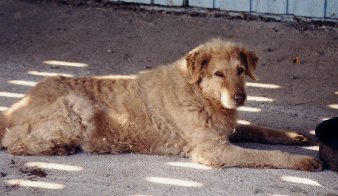A long haired Chesapeake can be defined as any CBR that has a coat longer than what is called for in the standard, tail furnishings excepted. Tail feathering is often "too long" even in dogs with proper coats. Dogs can be seen in the show ring with carefully "neatened" tails. Since the beginnings of the breed there have been dogs with longer coats and, at one time, they were accepted.Long hair is considered to be a simple recessive in most, if not all, breeds. Wire hair is dominant to short hair, short hair is dominant to long hair. Being a recessive, this trait is very difficult to breed out. The German Shepherd is another breed that has the gene for long hair and also a disqualification. Long haired German Shepherds may be seen quite often as there are many lines that carry the gene. Long hair genes are fairly rare in most lines of Chesapeakes.
Long hair can be found in several different patterns. It is very possible that these different patterns are different genetically. Only test breeding would answer that question. (Scary thought.)



